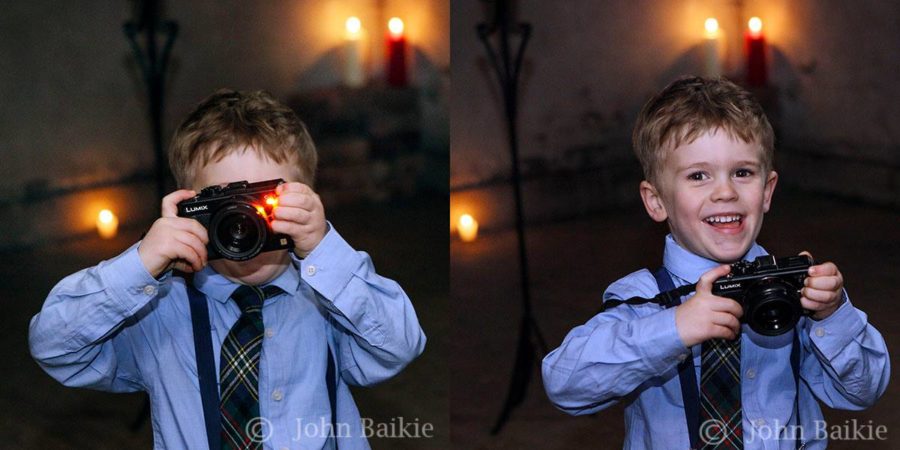
Top Five Things To Consider When Buying Your First SLR Camera
One thing that keeps coming up in conversation with people wanting to start photography, is what camera to buy. People are overwhelmed with choices these days, and even as a professional of twenty years, I find it hard to keep up with technology developments.
One thing that keeps coming up in conversation with people wanting to start photography, is what camera to buy. People are overwhelmed with choices these days, and even as a professional of twenty years, I find it hard to keep up with technology developments. So, before I start trying to sign people up for their first beginners photography course, here are some tips on what to look for in a camera.
First, I want to dispell a myth. The only person who cares about how many megapixels your camera has, is the guy trying to sell it to you. Well, that and a certain amateur wedding photographer I know, who was known to tell prospective clients how many megapixels his latest gadget had. Megapixels are irrelevant. Okay they are not totally irrelevant, but all modern cameras have more than enough for you. Anything over 10 megapixels is more than capable of producing great results. My first ever Canon DSLR had 3.1 megapixels. Take that on for a second….. And I printed albums, and large prints, and not once did anyone say “If only you had a 40 megapixel camera John”. The quality was very sufficient. So forget bloody megapixels, ok?
Interchangeable Lenses
Okay, so first thing to consider. Do you see this as a one off purchase, or do you see yourself growing the hobby in time? Because you need to consider if you can add to your system, or would you end up having to sell it and start again in a year. I’d recommend going for an entry level SLR camera, which you can buy lenses for. They generally come with a basic zoom lens, sometimes two, which are not generally top quality, but more than good enough to get you up and running. That way you can save your pennies from for upgrades.
ISO
As a beginner, unless you have done a lot of reading, or come to one of my courses, I don’t expect you to understand ISO. To keep it very simple it is a setting which relates to light sensitivity. If you are going to be shooting outdoors all the time in bright sunshine – and you are not reading this in Scotland – it’s not as important. The higher the ISO number, the more capable the camera is of shooting in low light conditions. Especially when you start, with the basic kit lens, the ability to shoot at 3200 ISO and above is definitely worthwhile. Modern cameras are constantly improving at high ISO which is a big change from the early days when images looked really grainy as soon as you went over 400 ISO. I regularly shoot at 3200 and way beyond.
FPS (Frames Per Second)
This is important if you want to capture fast moving action. Whether it’s your kids or pets playing, or down photographing a local sports event, if you want to capture bursts of images, you will need to make sure your camera can do this. 6-10 frames per second is definitely a good range for this. If you are doing landscapes, or still life images, for example a bowl of fruit on your sitting room table, this is less important…
Brands
I am not going to tell you Canon is better than Nikon, or Fuji is better than Sony. Is Pentax better than Olympus? Not for me to decide. What I will say, is stick with one of these brands, as you know them, they are household names, and have been around for a very long time. Don’t go for brands which you have no knowledge of, or which don’t have the same range of accessories and upgrades available. You’ll also find a lot more information and support is available in forums and groups, for the major brands. Secoond hand equipment is als readily available. Personally my favourites are Canon and Sony but Nikon and Fuji are equally good.
Flash
Having a hotshoe which can take an external flash is definitely worth thinking about if you plan to develop your hobby. A pop-up flash which is built into the camera is really not much good if you want to get creative. Being able to add a flashgun is definitely worth considering, especially if you plan to be shooting people, so to speak…
Okay bonus, sixth tip…
Video
Nowadays video is very popular, and many digital cameras offer HD quality film capabilities. If you are keen to start making short movies, and becoming the next YouTube sensation, then make sure your choice of camera has a video setting. Being able to switch from still image to moving image at the click of a button is an amazing thing at your fingertips.
That’s the main things I would consider at this stage. There’s a lot more to go into, but for a start point, those are the key parts to think about. I will go into the individual components in more detail in a future blog. I’ve added links below for my own two recommended purchases for a first camera.
